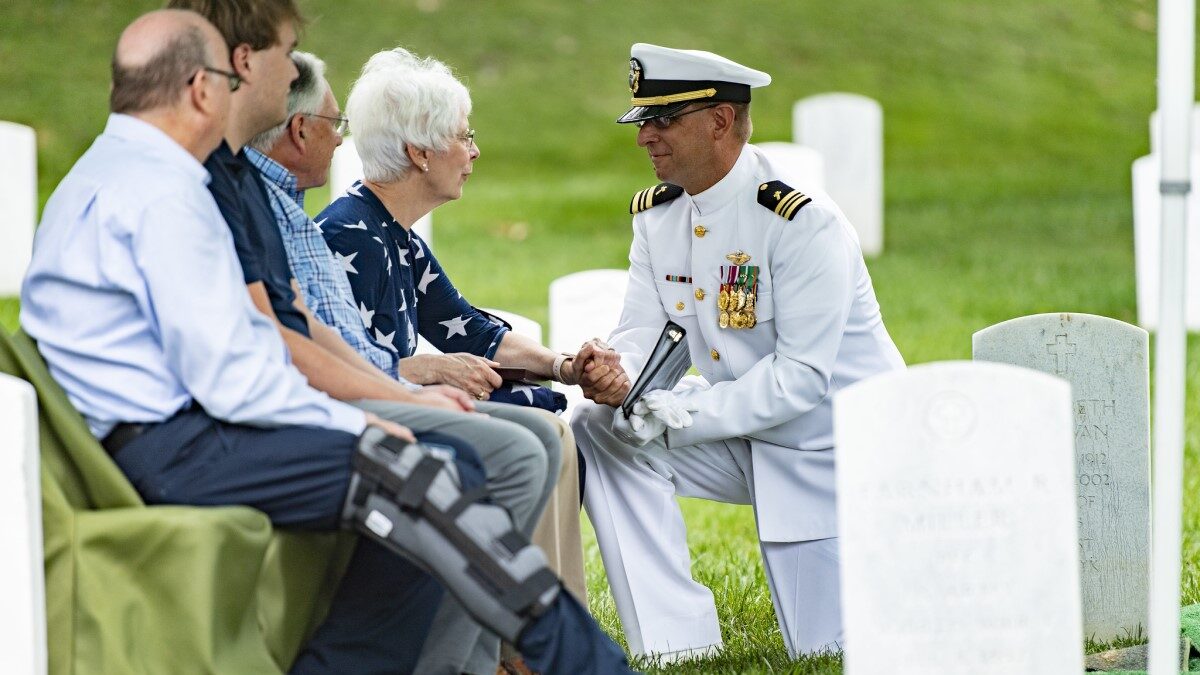Our military is in trouble. Chronic recruiting shortages are forcing the Army to cut 16,500 occupational positions, most of them vacant. The Air Force has proposed a reduction of 8,000 troops after missing recruiting goals for the first time in over 20 years. The Navy is short 9,000 sailors, forcing longer deployments for others.
Race-conscious “diversity, equity, and inclusion” (DEI) policies are making personnel shortages worse. Minority recruitment has remained steady or increased, which is fine, but a steep decline in white recruits almost entirely accounts for the ongoing recruiting crisis.
According to Military.com, in fiscal year 2018, the Army recruited 44,042 new white recruits — 56 percent of the total. In 2023, that number plummeted to 25,070, or 44 percent. In the Navy, white recruit losses accounted for an overall drop of about 9,000 new recruits.
Does National Security Depend Upon Incoherent and Irrational Stereotypes?
So, what are senior military leaders doing to fix this? They keep claiming without evidence that “diversity is a strategic imperative.” Race-conscious practices, they say, are essential for military readiness and national security.
The argument is absurd, especially since the Supreme Court’s 2023 landmark ruling ending racial preferences in higher education. The military service academies were not parties to Students for Fairness in Admissions v. Harvard and the University of N. Carolina, but the court ignored the government’s objections when it applied its ruling to the civilian universities’ ROTC programs.
In its opinion, the court also exposed the flimsy premises behind decades-old racial categories, describing them as “imprecise … overbroad … arbitrary … undefined … underinclusive … incoherent … [and] irrational stereotypes.”
Justice Neil Gorsuch noted that racial categories such as black, Hispanic, Native American, Pacific Islander, Asian, or white, were devised not by anthropologists or sociologists, but by “bureaucrats.”
The same bureaucrats cautioned in the 1978 Federal Register that their arbitrary racial categories “should [not] be viewed as determinants of eligibility for participation in any Federal program.” But they are.
Changing the Paradigm of Military Values
The Department of Defense validated racial preferences when it established the 2011 Military Leadership Diversity Commission (MLDC). By taking the advice of nonmilitary organizations and corporate business consultants favoring DEI racial categories, the MLDC turned military values upside down.
Consultants help private enterprises to please customers, but they know little about military combat operations, such as fighting and destroying an enemy force. Nevertheless, the MLDC report listened to business “experts” in writing that “although good diversity management rests on a foundation of fair treatment, it is not about treating everyone the same.”
The report added, “This can be a difficult concept to grasp, especially for leaders who grew up with the EO-inspired [equal opportunity] mandate to be both color and gender blind.”
This inexplicable shift away from non-discrimination, meritocracy, and “treating everyone the same” contradicted the oath every officer and enlisted person takes to “support and defend the Constitution,” which takes a colorblind approach to race upheld in numerous Supreme Court rulings.
The MLDC report also stated: “Cultural assimilation, a key to military effectiveness in the past, will be challenged as inclusion becomes, and needs to become, the norm.”
This astonishing proposal disregarded military requirements and culture, which requires identical treatment of personnel to build cohesion and mutual trust for survival in combat. Instead, the MLDC relied on a 1996 Harvard Business Review article advising corporate managers on how to stress differences, not unity.
The MLDC also recommended high-level “chief diversity officers” (CDOs) to ensure compliance with DEI mandates. Servicemembers were put on notice that at every step of their careers — from recruitment to promotion to three- and four-star rank and service chief levels — they would be “held accountable for their performance in diversity management and rewarded for their efforts” (or penalized for lack of them).
Like the Wizard of Oz, an intimidating diversity-industrial complex rules the Pentagon with billowing smoke, noise, and hot air. Unlike the fictional wizard, however, high-level DEI advocates are weakening our military in ways that could cost lives.
DEI Quotas and Mandates are Weakening Our Military
In August 2022, Air Force Secretary Frank Kendall and then-Chief of Staff Gen. Charles Q. Brown Jr. co-signed a memorandum calling for a reduction in white male officers from 64 percent to 43 percent. Many mid-career officers, told they were no longer wanted, pleased their families by moving to the commercial airlines. Now the Air Force has a shortage of experienced pilots.
Military DEI strategic plans lack solid data to support exaggerated claims about race-based diversity categories. The 2021 Task Force One Navy (TF1N) report, for example, published equivocal, misleading quotes from civilian sources and handbooks that did not include the words “military” or “armed forces” even once.
Thanks to chronic recruiting shortages, the Navy has begun accepting the lowest category of aptitude testing — a high-risk option that could worsen a rash of mishaps at sea.
The Heritage Foundation’s 2024 Index of Military Strength rates the Air Force as “very weak” on readiness, and the Navy and Army rated “weak” or “very weak” in different categories.
According to the latest annual Ronald Reagan Presidential Foundation and Institute Survey, public confidence in the All-Volunteer Force has declined from 70 percent to 48 percent since 2018. And a recent Gallup poll reported a drop in confidence in the military from 81 percent to 60 percent since 2010.
The latest Blue Star Families survey reported that only 32 percent of military families would recommend service in the All-Volunteer Force.
So, what has the Army done? West Point officials are removing the historic words “Duty, Honor, Country” from the U.S. military academy’s mission statement, dropping “Country” and obscuring “Duty” and “Honor” in a wordy separate statement of “Army Values.”
Diversity Metrics Over Meritocracy
Civilian and military leaders seem stuck in a time warp, conducting DEI business as usual. Policies that replace color-blindness with race-consciousness define wokeism, which takes progressivism to extremes, even if it hurts the institution.
True diversity, equality, and appropriate inclusion are good things, but DEI programs that divide and demoralize are not. A ship that is steered two degrees off course, without correction, eventually winds up in the wrong ocean. With national security at risk, Congress must intervene to change the military’s course and restore sound priorities before it is too late.









